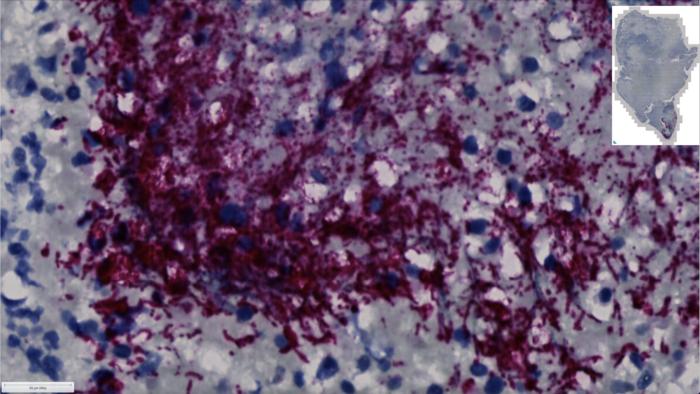Colorectal cancer is the second most common cause of cancer-related mortality among men and women in the United States, according to the American Cancer Society. At-home tests, which measure blood in stool as a potential marker for colon cancer, are often used for colorectal cancer screening.
Usage of these tests has increased during the COVID-19 pandemic as people try to avoid clinical visits. However, effectiveness of these screening tools, along with all colon cancer screenings, requires a follow-up colonoscopy if an abnormal test result occurs. The problem is that experts say current follow-up rates are low.
A new study, led by researchers at University of California San Diego School of Medicine, Veterans Affairs San Diego Healthcare System (VASDHS), Veterans Affairs Greater Los Angeles Healthcare System and University of California Los Angeles, found delayed time between abnormal stool-based screening and subsequent colonoscopy was associated with an increased risk of a cancer diagnosis and death from colorectal cancer.
The study, published in the February 2, 2021 online edition of Gastroenterology, found those who delayed a colonoscopy by more than twelve months after an abnormal screening test result were at an increased risk of being diagnosed with colorectal cancer. The odds of being diagnosed with late-stage colon cancer increased at 16 months by approximately 33 percent.
“Many colon cancers are asymptomatic and can be growing without the patient even knowing. That is why it is so important to screen. But as our study shows, it is also critical to follow up with a colonoscopy if the screening result is abnormal,” said Samir Gupta, MD, corresponding author of the study and professor of medicine in the Division of Gastroenterology at UC San Diego School of Medicine and VASDHS.
“Early detection means less invasive treatments and excellent outcomes. When detected early, patients have a 90 percent survival rate with a low risk of recurrence. Late-stage colorectal cancer means more invasive and complex treatment with less than a 15 percent survival rate. As usage of more non-invasive tests for colorectal cancer screening continue to rise during the pandemic, and as more non-invasive screening tests come onto the market in the future, it is critical to ensure all patients with abnormal colorectal cancer screening tests get a timely colonoscopy.”
The national study involved 204,733 veterans ages 50 to 75 with an abnormal screening test. A limitation of the study was a high proportion of men; 5,453 women were included.
“There are no national standards or mandates to guide patients, providers or health care systems on the clinically acceptable period of time between abnormal screening and colonoscopy,” said Folasade May MD, PhD, senior author of the study and assistant professor of medicine at UCLA. “We hope our findings will inform national standards for appropriate time intervals and interventions to improve timely colonoscopies and colorectal cancer outcomes.”
A family history, smoking and poor diet are significant risk factors of colon cancer. Symptoms include rectal bleeding, low-iron anemia, a change in bowel habits and unexplained weight loss.
In 2018, the American Cancer Society updated guidelines for colorectal cancer screening. It is now recommended that those age 45 with an average risk of colon cancer begin regular screenings. Previously, the guideline recommended screening begin at age 50 for people at average risk.
“In general, prevention and early detection efforts have substantially dropped death rates in the United States. However, the pandemic has resulted in many people missing cancer screenings or not doing follow-up colonoscopies after abnormal at-home screenings,” said Gupta. “We strongly encourage patients to schedule an appointment if they receive an abnormal screening test. Our hospital and clinical settings are following all COVID-19 safety guidelines. Hesitancy to follow up on your health care could have fatal consequences.”
###
Co-authors of the study include: Yazmin San Miguel, Joshua Demb and Maria Elena Martinez, all with UC San Diego.










































